The unbearable lightness of being: Why lightweight guitars are overrated
Lighter is not always better
Lightweight guitars have been a ubiquitous trend in the guitar world for years. They promise comfort, portability and a stress-free musical experience – fitting at a time when seemingly every new product has to be more ‘ergonomic’ and ‘user-friendly’. Young guitarists and musicians who spend a lot of time on stage seem to be particularly receptive to this ideal. Why carry around a heavy brick when there are good sounding alternatives? – It’s a fair question, but in my opinion it’s not always answered correctly. There are good reasons to be wary of lightweight guitars.
All About Lightweight Guitars or Fat Sound
Over the years, I have had countless guitars in my hands (and around my shoulders), from featherweight travel guitars to heavy 1970s Les Pauls that make the shoulder press at the gym obsolete. One thing I have noticed over and over again is that weight is less a matter of chance than a deliberate part of the design. Whether it affects the sound, the playability or even the feeling of “grounding” – a light guitar may be comfortable, but I personally often miss that certain something. Time to take a critical look at lightness.
Historical Context: Fat Sounds Fat
In the 1950s and 60s, a guitar was not just an instrument – it was a symbol. Guitars like the Gibson Les Paul or the Fender Telecaster were built from solid woods prized for their tonal and structural qualities. Heavy, full-sounding mahogany and solid ash were the standard. No one thought the body was too heavy, or even considered milling it out to make a Swiss cheese. On the contrary, the weight of these instruments was often associated with quality and stability. Guitarists like Jimmy Page and Eric Clapton swore by these classics for their sound and solid construction.

However, the evolution of the guitar industry brought about a change. Materials such as basswood and poplar were increasingly used, and as the ’80s and ’90s progressed, lighter alternatives became not only technically possible, but also increasingly in demand.
The demand for portable and ergonomic models grew, and models like the Parker Fly or ultra-light guitars with extensive weight-relief milling under the top crept into manufacturers’ product lines. But as a fan of vintage instruments, you might argue that while the guitar industry was reducing weight, some essential features were being lost. And I speak for many guitarists when I say that while lightweight instruments are comfortable, they often don’t offer the same depth of sound or sustain as their heavier siblings. And no, it’s not just an illusion; there’s a technical explanation.




Technical Aspects: Weight and Sound Quality
A guitar is much more than just a piece of wood with strings – it is a resonating body that not only produces sounds, but also shapes them. On the one hand, weight plays an important role, and on the other hand, the materials used.
Heavier guitars are often made from denser tonewoods such as mahogany, ash, or (at least in part) ebony. These materials provide longer sustain and a fuller sound because they transmit the vibrations of the strings better and less energy is lost. That’s what physics says.
On the other hand, lightweight guitars, often made of poplar, basswood, or heavily carved woods, can sound flatter. Although they often have very good, crisp response in the treble and midrange, they often lack the characteristic depth that many guitarists appreciate. Consider the difference between a solid, non-chambered Les Paul and a hollow-body guitar. While the Les Paul delivers powerful sustain, the hollow-body sounds airier, but also less succinct-especially at typical band volumes. The sound of a relatively heavy guitar is more balanced.
Speaking of balance, light-weight guitars tend to be top-heavy due to their light-weight body construction, which can be detrimental to feel. The reason for this is that necks can hardly ever be made to save weight. Fortunately, we are still looking in vain for weight-reducing holes and the like.
The difference between a well-balanced and a top-heavy instrument becomes particularly apparent during extended playing sessions, whether in the rehearsal room or on stage: while a heavier guitar often feels more stable, a light guitar can sometimes feel unstable, which can affect the playing technique.
Comfort vs. Performance
Of course, there are situations where the weight of a guitar can have a significant impact on comfort. Musicians who play long gigs, or those with health restrictions, might (and probably should) prefer a lightweight guitar. But let’s face it: how often is comfort really the primary concern? In my experience, recording in a studio or performing with a band is all about having an instrument that sounds good and feels solid. Whether the guitar weighs two kilos more or less is of secondary importance – at least as long as your shoulders can take it and the chair you’re sitting on is comfortable.
Another, not entirely subjective point is the perception of weight. With a wide, well-padded strap and the right playing position, even a heavy guitar can be played comfortably for long periods of time. Individual preference certainly plays a role here, but there are reasons why these shoelace-wide nylon straps are rarely used for more than a quarter of an hour.

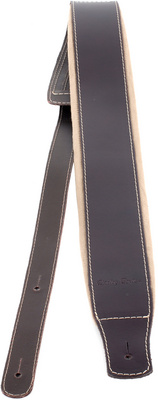

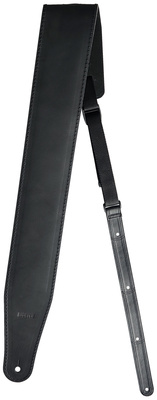

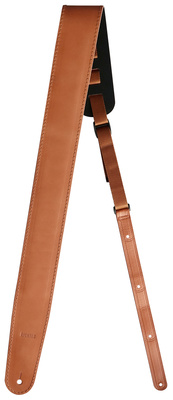
Marketing, Myths and a Grain of Truth
The guitar industry discovered weight as a selling point a long time ago. “Ultra Modern Weight Relief” or “Chambered Body” – these are the terms used to advertise lightweight models. But often it’s just marketing that doesn’t match reality. Many guitarists find out after buying that the perfect lightweight can’t compete with heavier models in terms of sound.
This is nicely illustrated by my favorite company, Gibson, which in the 2000s began celebrating new hole arrangements under the top as the ultimate solution. They followed the demands of guitarists – only to return to massive bodies in the Les Paul Standards. Ok, the Modern is still pierced and doesn’t sound bad either, but that’s not my point.
A prime example of a guitar trimmed for “performance” is the Parker Fly. In the 1990s, it was considered revolutionary: ultra-light, futuristic in design, and packed with high-tech features. But for all its innovation, it remained a niche guitar. And why is that? Because it sounded too sterile for many guitarists, proving that weight is not only about comfort, but also about sound quality. And that guitarists are traditionalists.




Personal Perspective: The Charm of Heavy Guitars
I’m sitting next to one of the heaviest guitars I’ve ever played: a 1979 Gibson Les Paul Custom. This instrument feels like it weighs as much as a small car, but the sound is and remains simply breathtaking. The guitar has more character than you could possibly drown in, and the sustain is unparalleled. It’s an instrument worth the physical effort – and it never fails to remind me why I bought those expensive guitar straps in the first place.

Heavy guitars have a very special character. They convey a sense of solidity, of something permanent. You feel the mass behind every note, and that gives you a certain confidence as a player. Lightweight guitars may be comfortable, but they often feel empty – an impression I personally can’t shake, especially with very narrow models. My opinion? Four kilos is the minimum for a real Paula, five isn’t bad either.
The Other Side: When Lightweight Guitars Make Sense
Of course, of course. I’m a diplomat. Of course there are situations where lightweight guitars have their place. For young guitarists just starting out, or older musicians who no longer feel like lifting weights on stage, they can be a viable alternative. Travel guitars or instruments intended primarily for acoustic sets can also benefit from being lighter. And if you’re playing really long gigs, you’ll appreciate every ounce you don’t have to carry around.
A good example from my own fleet is an alder Fender Stratocaster-a lighter tonewood that still offers a balanced tonal spectrum. But again, the balance between weight and sound quality has to be right.
Conclusion: A Matter of Taste and Priorities
Ultimately, the choice between a light and a heavy guitar is a matter of personal taste and priorities. A light guitar may be more comfortable, but that doesn’t automatically mean it’s better. A heavy guitar may be more tiring, but it’s often worth the effort.
In the end, it’s always the whole package that counts: sound, feel, and aesthetics. And maybe sometimes you should just defy the psychological barrier of a “too heavy” guitar – the sound will thank you.
Original article by Jan Rotring for GEARNEWS.de
*Note: This article contains advertising links that help us pay for this site. Don’t worry: the price for you will always be the same! If you buy something through these links, we get a small commission. Thank you for your support!
9 responses to “The unbearable lightness of being: Why lightweight guitars are overrated”

 1,9 / 5,0 |
1,9 / 5,0 | 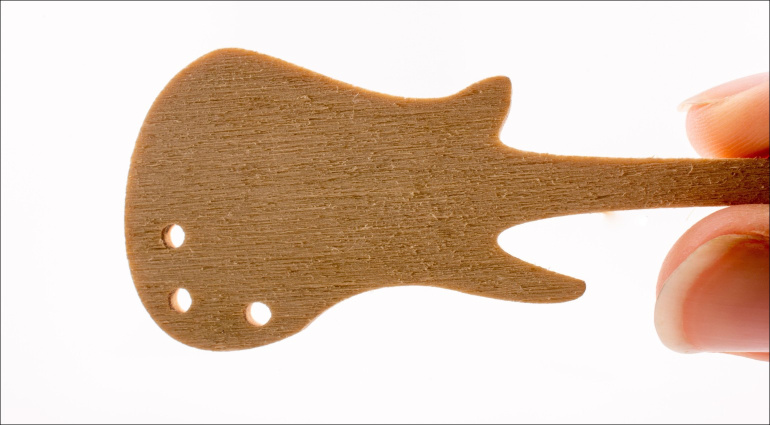


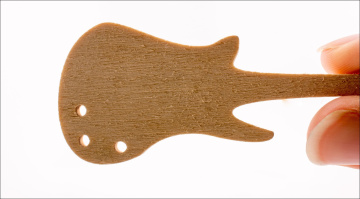

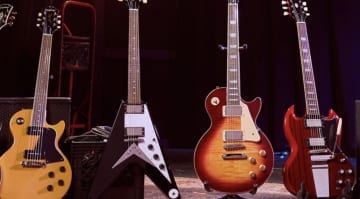


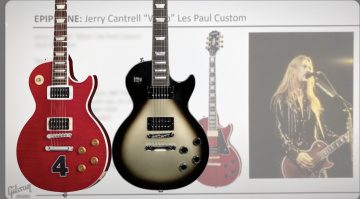
Not really sure the science does actually back up the author in the way he asserts. As a simple starter, dense materials have a brighter resonance. True of wood too, though wood is structurally complex. The subject of weight is not as simple as introducing air in the form of semi-hollows and comparing it to a prehistoric les Paul, from the time when men played guitar.
To reiterate, wood is complex. But there are plenty of logs out there for people to try if they really want heavy.
To threeiterate, wood is complex.
I think those early pine body Teles sound fine too.
Tone wood is a myth. Back pain isn’t.
This is not just a stupid article, it’s a dangerous one.
Take care of your back, get a lightweight guitar. If it doesn’t sound like you want : change the pickups. It has a million time more impact than wood.
Amen. I’m never reading another one of this writer’s articles ever again.
Parkers sound and feel great,
Tone is so much more, fingers, pickups and amp.
Garbage article.
Not much science involved in this article, mostly opinion. Billy Gibbons sounds as good as ever playing an SG as he did playing a Les Paul. 7-8 lbs. is the sweet spot for solid body electrics in my opinion.
it sounds amazing
Unfortunately, as usual, another esoteric article about the magical properties of tonewoods for electric guitars. Prof. Manfred Zoellner has used scientific methods to prove that the wood has almost no influence on the sound of an electric guitar. So why should you hang 4 to 5 kilos around your neck and break your back? If you want to know more about Zoellner and his research results, you can watch the videos here. Unfortunately in German. But there are quite useful subtitles.
https://www.youtube.com/watch?v=GzPVxL7nIl8
I think it’s hilarious that the first video pretty clearly shows that the weight of the guitar and amount of wood has almost no effect on sustain or tone. Yes, the video wasn’t performed in a lab with 30 guitars and under every possible condition, but it was plenty to convince me. I think the lesson is just buy the guitar that feels and sounds good to you. Compared to the pickups, amp and how you play, the wood and weight are almost irreverent.
Lots of pseudoscience here, which as another commenter pointed out, is debunked in the cited YouTube video by Darrell Braun.
What’s actually going on with the many subjective opinions about guitar materials and construction comes down to the interaction of two or more senses in our brain. A heavier guitar is going to feel different in our hands (and on our back) and will influence the way we perceive the sound of that guitar. The vibrations of the strings will feel stronger in your hands, arms, and torso with a solid chunk of wood vs a milled out lightweight body, and will also affect your perception of the sound.
It’s the reason why headphones are less gratifying than speakers to listen to, even when the headphones are technically more accurate, resolving and have a more extended frequency range… the visceral feel of sound waves hitting our bodies reinforces what our ears hear in a subjectively pleasing way.
Our sense of hearing, at least the processing of it in our brains, is fairly underdeveloped compared to touch and sight. Hearing uses 1/10th as many neurons as vision processing does, and 1/4 as many neurons as touch processing. And with our echoic memory only lasting 3-5 seconds, our perception of sound is very malleable and subjective. Which is why we have endless arguments about the way we perceive sound.
You are currently viewing a placeholder content from Facebook. To access the actual content, click the button below. Please note that doing so will share data with third-party providers.
More InformationYou are currently viewing a placeholder content from Instagram. To access the actual content, click the button below. Please note that doing so will share data with third-party providers.
More InformationYou are currently viewing a placeholder content from X. To access the actual content, click the button below. Please note that doing so will share data with third-party providers.
More Information